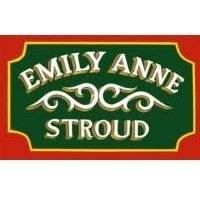

PhilAtterley
Member-
Posts
159 -
Joined
-
Last visited
Profile Information
-
Gender
Male
-
Location
Yorkshire
-
Occupation
Transport Consultant
Recent Profile Visitors
1,077 profile views
PhilAtterley's Achievements
Contributor (4/12)
12
Reputation
-
Take a few deep breaths, . . . then read post # 177.
-
No, I think that very few have the necessary resolve to stand up to the bullies who are behind C&RT's deplorable conduct, . . . and it is NOT their 'objectives' I have very much quarrel with, it's their methods ! As for them being easier to deal with if they had "better legislation", . . . I really don't think that even warrants an answer !
-
Without a specific instance of an alleged 'wrong' to be examined by the Court, Judicial Review is a non-starter. My preference would be to wear C&RT down via, as far as is achievable, a concerted campaign of refusal to agree to the T&C's when buying a Licence or a PBC. They would have the straight choice of either giving up trying to impose their ultra vires T&C's as a condition of issuing a PBL or a PBC, or to resort to dubious legal proceedings which the boater has it in his/her power to sabotage at will. Repeated with sufficient regularity by a number of boaters, and resulting in every one of the ensuing County Court Part 8 Claims degenerating into a costly exercise in futility they were forced to discontinue, even Parry's happy band of compulsive litigators would, in the end, be obliged to give up.
-
Whilst not as inaccurate to the same extent as much that C&RT produce and publish, they have nonetheless tacked the words -"when not being used for navigation" - onto the 'home' mooring option of the 1995 Act's S.17(3){c}, the implication being that when not engaged in "navigation", whether 'bona fide' or not, the boat cannot be moored anywhere other than on it's (home) mooring. In this, it is going very much further than Parliament did with the straightforward proviso/option that a mooring "where the vessel can reasonably be kept and may lawfully be left" will be 'available' for the boat, if the owner does not intend to regularly move and/or use it after a maximum of 14 days continuously moored at one location on a canal towpath or any other C&RT controlled mooring.
-
More correctly, the joint effect of both blade size and speed of rotation. On slow (most of today's so-called 'narrowboats struggle to achieve a V/L ratio much in excess of 0.8) displacement vessels, efficiency increases as diameter increases and rotational speed decreases -
-
Yes, metric horsepower, and in common with much else in the metric system we have had foisted on us, you get short changed with this too. 1 x PS (metric HP) = 542.5 ft.lbs per second - 7.5 ft.lbs short in comparison with 'proper' horsepower at 550 ft.lbs per second.
-
Which model/type have you got - there is a 16200 Btu model on page 9 with a rated power consumption (input power) of 1580 Watts (1.58 KW) which the SR2 will cope with easily, but it's specified as a 60 cycle machine and with the Lister governed to 1500 rpm running a close coupled alternator you will be running the air-con unit off 50 cycles AC.
-
No, this is completely wrong - rated horsepower is what an engine is capable of producing if it is loaded up sufficiently to induce it to produce it's maximum rated horsepower whilst running at maximum rated rpm. Normal operating speeds and loads don't come into the reckoning.
-
I don't accept that the answer should be restricted to canals only - why should it ? - C&RT's ultra vires T&C's are enforced equally unlawfully on both river waterways and canals. The answer to the question is - yes, at least twice when a 'Rivers only Licence' was refused on the grounds of breaching Conditions 2.1, 3.1, and 7.2 of the 2013-14 T&C's. There is also the instance of the boat on the Grand Union canal, referred to by Nigel Moore in post #150 of this thread.
-
An engine's horsepower rating is the maximum power it is capable of producing at maximum rated rpm. Any engine will only produce a horsepower output sufficient to cope with the load it is working against. For instance, if you run your boat's engine up to it's maximum rated revs in neutral, then it won't be producing the (horse)power it is capable of producing at those maximum revs, it will only produce sufficient (horse)power to overcome internal frictional losses in itself and in the gearbox, to draw in combustion air and expel exhaust gases, to heat up and operate it's own cooling system, and to drive the alternator.
-
Horsepower rating is simply a measure of the amount of 'work' an engine can do in a given amount of time, and is no different whatever sort, or age, of engine it is applied to. One (1) Horsepower = 550 ft.lbs of work per second, or 33,000 ft.lbs per minute . The reason for older, slower revving engines apparent power advantages over modern high revving units is entirely and solely down to them being able to transmit more of the power they produce into the water as thrust due to them turning considerably more efficient, larger diameter and slower turning propellers.
-
OK, . . so if I understand you correctly, you don't want to be 'sidetracked' into any degree of clarity about your phrase - 'obviously compliant', and my asking you to elaborate on what you meant by 'additional factors', equates with 'obfuscation' ?
-
There is not, in fact, any such thing as a full Canal and River Licence , nor for that matter is there any such thing as a 'Rivers only Licence', the latter being an invention of C&RT to con boaters, and the Judiciary, into believing that they have statutory powers to license the use of Common Law public navigable (PRN) river navigations A (boat) Licence covers use of all C&RT controlled waterways, and serves as Pleasure Boat Certificate whilst using the main navigable channel of any of the river navigations listed in Schedule 1 of the 1971 BW Act. A Pleasure Boat Certificate covers use of the main navigable channel of only the river navigations listed in Schedule 1 of the 1971 BW Act. A Houseboat Certificate covers the keeping of a houseboat on any inland waterway that is under C&RT control - although S.13 the 1971 Act does actually state 'an inland waterway'. It is also worth mentioning here that the distinction C&RT make between CC'ing Licences and HM'ing Licences is another fabrication made with the intention of confusing matters to their benefit - there is only one type of Licence that can be issued or refused under the S.17 provisions of the 1995 Act.
-
Is that 'compliant' with C&RT's ultra vires T&C's, or 'compliant' with statute ? As for 'additional factors' - can you elaborate on that ? Licences, Pleasure Boat Certificates, and Houseboat Certificates are grouped as all being a 'relevant consent' under the 1995 Act. The issuing and/or refusal of them is subject to the 'rules' laid down in S.17 of that Act, whereas the usage of them is subject to differing 'rules' - the most worthy of note, and the most draconian, being the HBC, for which C&RT are able to apply whatever T&C's they so wish.
-

Moving boat Manchester to Bath options?
PhilAtterley replied to jennywren's topic in General Boating
Can I ask what the mechanical problem is ? Resorting to a move by road, and all the attendant cost, for the fear of a boat breakdown seems a bit drastic to me - maybe even being pessimistically over cautious.



